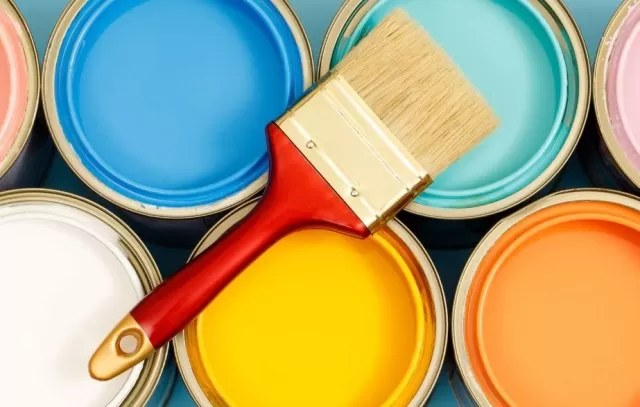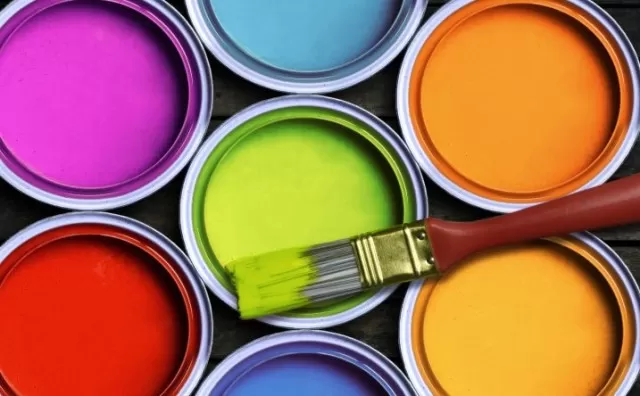By following these guidelines, you can ensure that your leftover paints remain in good condition for future touch-ups or projects.
Saving money and avoiding unnecessary trips to the store are always wise decisions, especially when it comes to home renovations.
Whether you’re undertaking a major overhaul or making gradual improvements, staying within budget is essential. One effective strategy for staying on track financially is storing leftover paint for future touch-ups.
This not only saves you money in the long run but also spares you the hassle of searching for the same color if it becomes discontinued, potentially eliminating the need to repaint an entire room.
Knowing how to properly seal and store paint is crucial for preserving its quality and usability.
Having a well-organized and properly stored paint collection will save you time, money, and effort in the long run, allowing you to maintain the beauty of your home with ease.
How should paints be stored?

Proper storage of paints is essential to ensure their longevity and usability.
Extreme temperatures can have detrimental effects on paint, causing it to dry up or separate, rendering it unusable. Therefore, it is important to avoid storing paint in areas such as garages or sheds where temperature fluctuations are common.
To maintain the quality of paint, it is recommended to store it indoors in a designated utility room or under the stairs cupboard.
These areas typically provide a more controlled environment with stable temperatures. It is important to keep the paint away from radiators or any other heat sources that could accelerate the aging process.
Additionally, direct sunlight should be avoided as it can cause paint to fade or change in color over time.
By following these storage guidelines and ensuring that paint is kept in a suitable indoor location, you can prolong its shelf life and maintain its quality for future use.
paints Storage Methods

I must admit that I find handwashing dishes to be a tedious task.
The scrubbing, rinsing, and drying process is time-consuming and requires patience. Whenever possible, I prefer to save time, water, and effort by using the dishwasher.
Recently, I discovered that the dishwasher can clean more than just dishes, which is a game-changer for me. Numerous surprising items can be safely cleaned in the dishwasher, allowing me to avoid handwashing even more household objects.
To learn more about the dishwasher’s versatility, I consulted experts in the field.
Adam Hofmann, director of engineering for dishwasher advanced systems at GE Appliances, provided valuable insights. He cautioned against getting too adventurous and advised against placing items like electrical appliances, greasy car parts, and shoes in the dishwasher.
Instead, he recommended focusing on items made of dishwasher-safe materials such as plastic, ceramic, metal, and glass.
When it comes to plastic items, it’s important to consider the potential damage that high heat in the dishwasher can cause.
To avoid melting or releasing toxins, it’s crucial to research the types of plastics that can safely go in the dishwasher. Look for the dishwasher-safe icon on the item or consult the manufacturer’s instructions if in doubt.
With this knowledge in mind, I discovered that there are numerous items beyond dishes that can benefit from a thorough cleaning in the dishwasher.
However, it’s advisable to wash particularly dirty or grimy items separately and run a sanitation cycle before loading your regular dishes. Here are some surprising items that can be cleaned in the dishwasher, along with helpful tips to achieve the best results.
Firstly, it’s essential to secure the lid back onto paint cans before storing them.
Wipe off any excess paint, tap the lid gently with a rubber mallet, and consider adding a layer of plastic wrap for added protection. Paint cans should be stored in a cool, dark area, away from direct sunlight and extreme temperatures.
Separating different types of paint and organizing them by room or finish can also help streamline storage and retrieval.

To keep your paint and painting supplies organized in one place, consider using a durable metal shelving unit with caster wheels for convenience.
Open-top or open-front bins can corral smaller cans and supplies like brushes, rollers, and drop cloths. Labeling shelves or bins can minimize confusion and ensure easy access to the required items.
For partially used paints cans, transferring the remaining paint to smaller containers such as glass jars or plastic touch-up containers can help prevent waste and make future use more convenient.
It’s important to label each container with essential information such as brand, color, finish, the space or furniture it was used for, and the date it was opened.
Creating a paints portfolio or documentation of the paint used in each room can be beneficial for future reference or for sharing color choices with potential buyers when selling a home.
Additionally, it’s advisable to keep craft paint separate from regular paint to ensure easy accessibility. There are various organizers available for different types of craft paint, or creative solutions like repurposing spice risers or shoe organizers can be used.
Knowing when to dispose of expired paint is essential.
Each brand or type of paint has a different shelf life, so it’s advisable to check with the manufacturer for specific guidelines. Signs of expired paint include an off-putting odor, mold or mildew around the lid, a lumpy consistency when stirred, or a different appearance on the wall compared to previous use.
Proper disposal of expired paint varies depending on local regulations.
It’s important to check with the local municipality for guidelines on paint disposal. Websites like Paintcare.
org can provide information on drop-off locations and tips for reducing paint waste. Donating excess paint that is still in good condition to organizations like Habitat for Humanity, schools, or global paints.
org is another option to consider, as it helps reduce clutter and supports worthy causes.
*The information is for reference only.